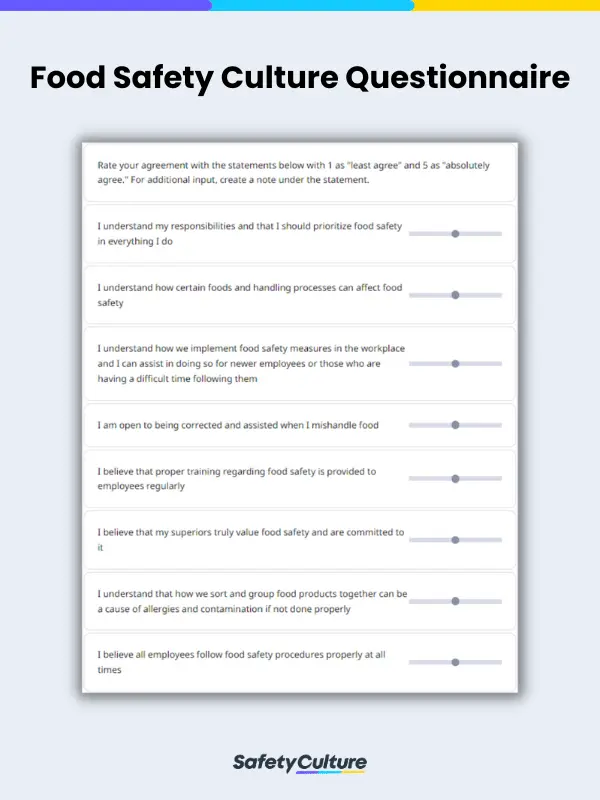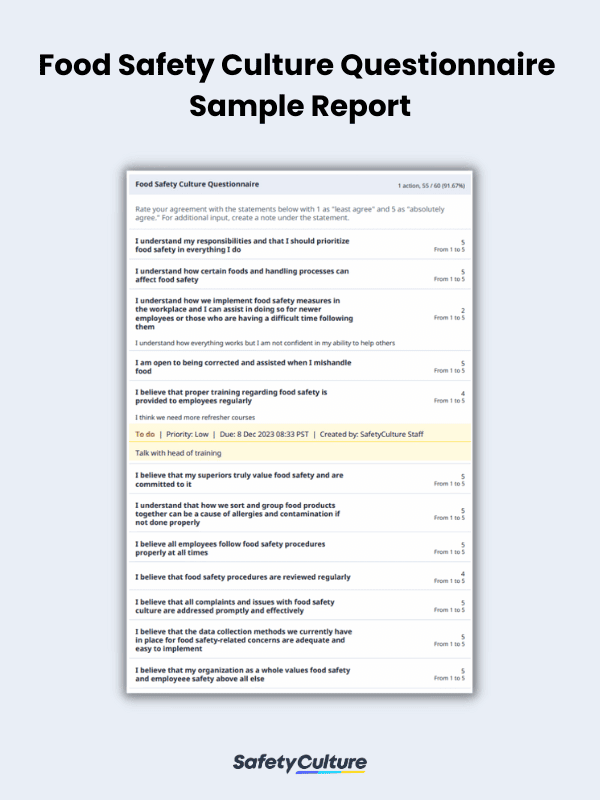What is a Food Safety Culture Questionnaire?
A food safety culture questionnaire is a document used in organizations to analyze and ensure the safety of the food they create, prepare, and serve. It can help in identifying issues and gaps in processes, as well as collecting and addressing employee concerns and observations.
Importance and Benefits
Food safety culture can be defined as an organization’s collective commitment to ensuring the safety and well-being of those who consume their food products through every facet of its operations. This includes adherence to regulations, values, behaviors, and practices that prioritize the production, preparation, and serving of safe and high-quality food products.
However, it can be difficult to measure the success of implementing a food safety culture, hence the need for a food safety culture questionnaire. Using a questionnaire can help an organization’s management better understand how their food products are received, and if their existing processes and procedures are beneficial to them. A food safety culture questionnaire can also help in assessing current practices if they are compliant with the necessary local and international safety standards for food, worker safety, and workplace operations.
Other benefits of using a food safety culture questionnaire include the following:
- Promoting continuous improvement
- Improving transparency among employees and customers with the organization
- Reducing downtime caused by issues in food preparation and production
What to Include in a Food Safety Culture Questionnaire
A typical food safety culture questionnaire has fields for the following:
- The employee’s understanding of the following:
- Their responsibilities
- The value of promoting a culture of food safety
- The importance of training
- Their supervisors’ attitude towards food safety
- Observations on the following:
- How issues with food safety are handled
- How other employees value or think about food safety practices
- How data collection methods are followed and implemented
- How the organization, as a whole, values food safety
Food safety culture questionnaires can come in different types. A digital version with a point scale system that prompts employees to choose a number from 1 to 5 as their response to certain questions, is the most ideal and most simple way to create one. Choosing 1 would mean the employee does not agree with the statement, while choosing 5 would mean they wholeheartedly agree with it. In case of vague responses and feelings, employees can then just choose to add a note to their responses. This direct way of rating and answering can improve response rates, as well as data collection processes.
Here is a food safety culture questionnaire example for reference:
FAQs about Food Safety Culture Questionnaires
Managers, team leaders, and general employers are often in charge of managing food safety culture questionnaires. However, some organizations have dedicated safety managers and quality staff who are responsible for the questionnaires instead.
Anyone in an organization can answer the food safety questionnaire, including those in leadership positions and the owners. In some cases, a food safety culture questionnaire can also be modified and used for customers of food retail businesses.
There are no laws explicitly stating that businesses should use food safety culture questionnaires. However, different safety authorities such as the US Food and Drug Administration (FDA) and Food Standards Australia New Zealand (FSANZ) suggest that organizations should regularly assess their food safety culture practices, which can be done so with questionnaires.




